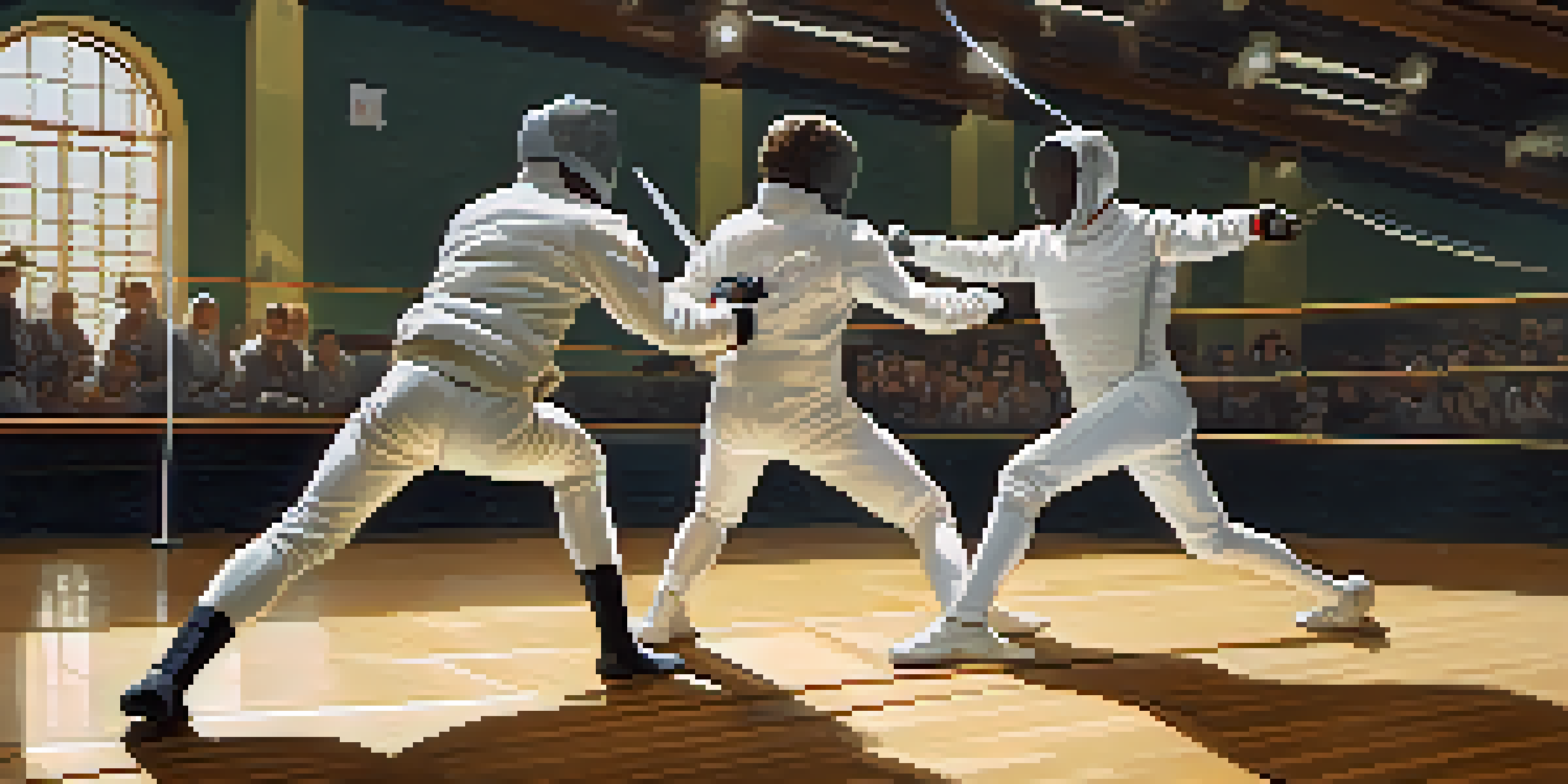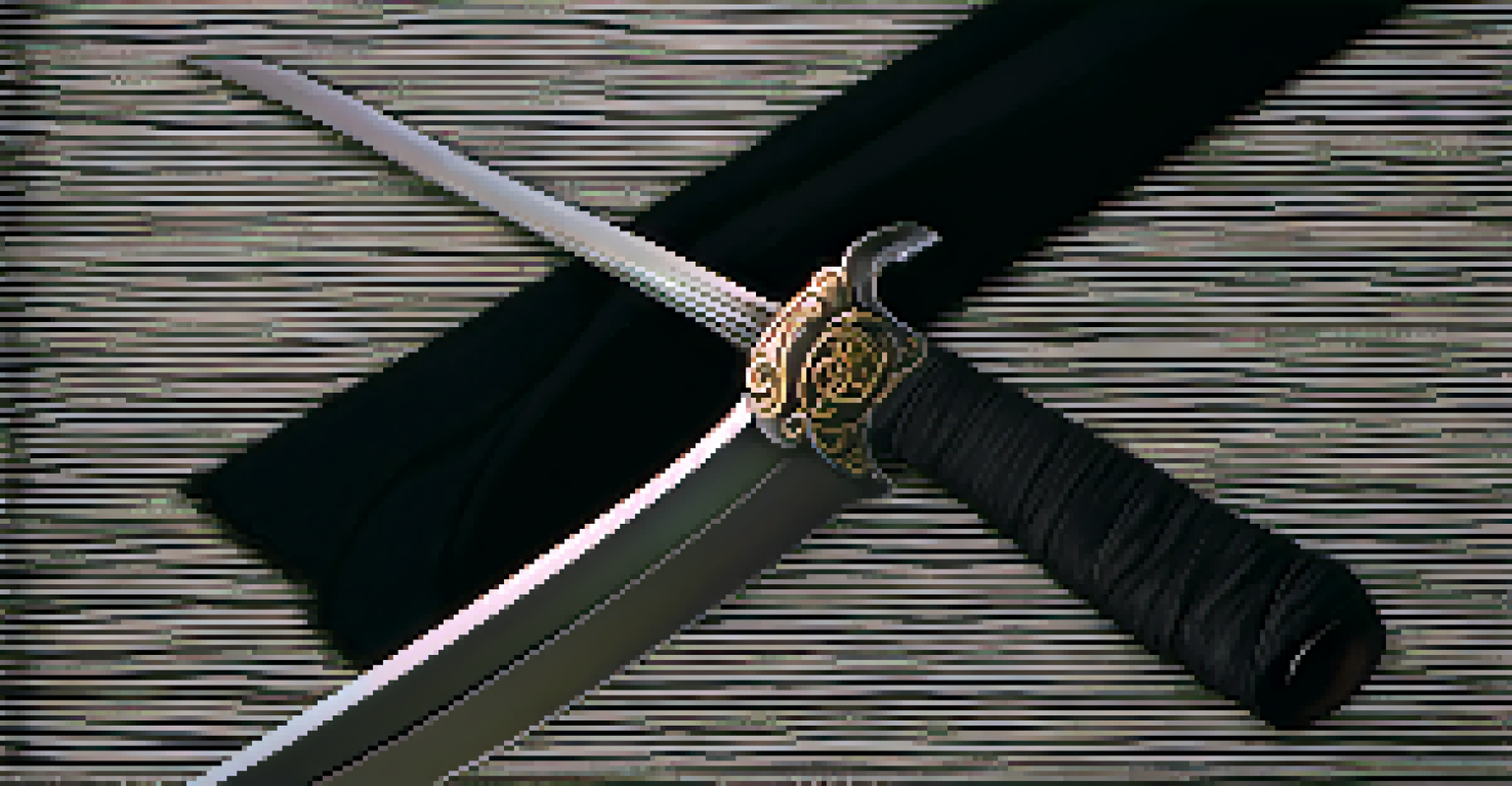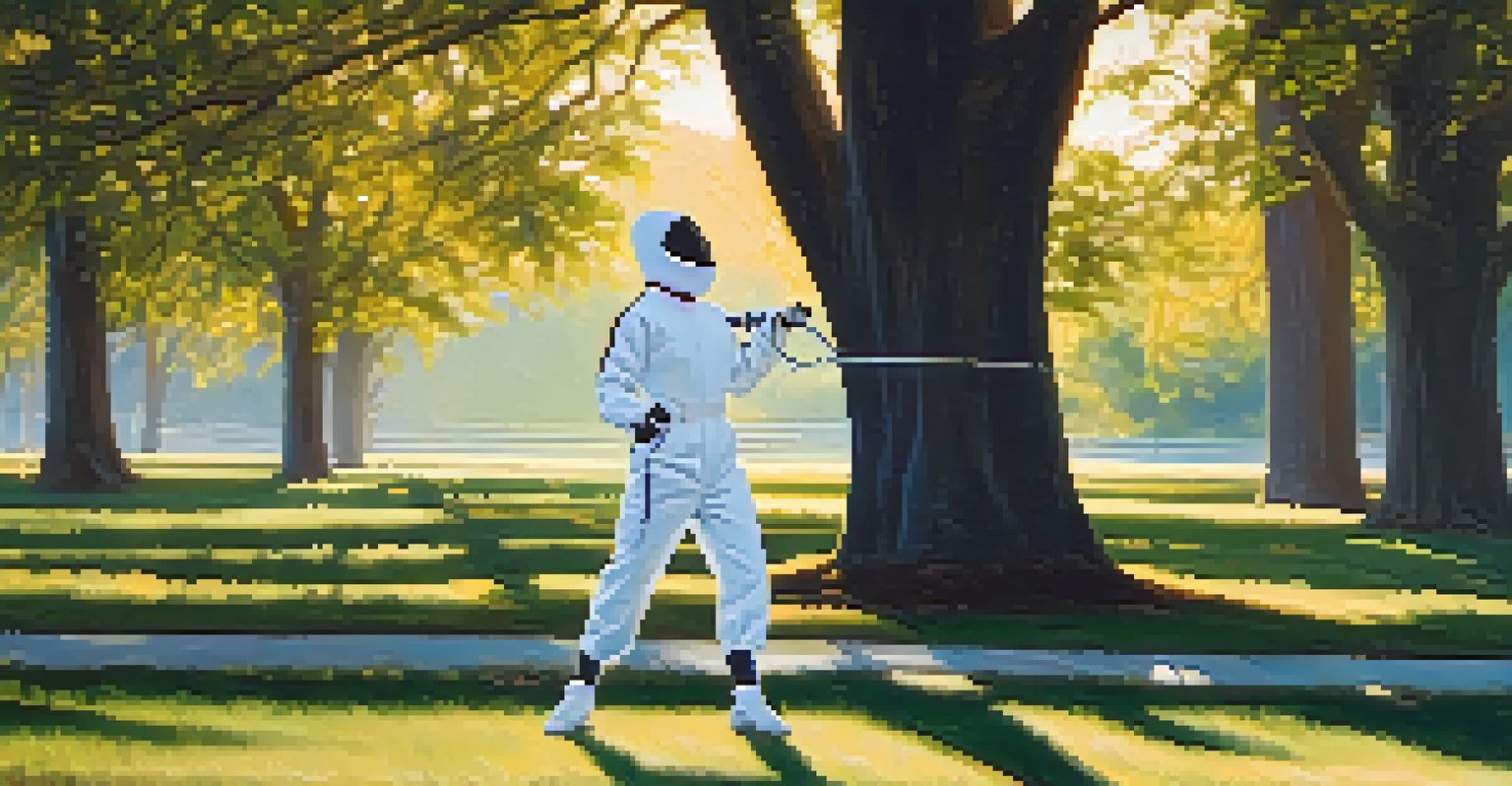The Science of Fencing: Analyzing Movement and Technique

Understanding the Basics of Fencing Technique
Fencing is more than just a sport; it's a dance of precision and strategy. At its core, fencing techniques involve a combination of footwork, blade work, and tactical awareness. Each fencer must develop a strong foundation in these techniques to excel in bouts. The basics include stances, lunges, and parries, each serving a distinct purpose in both offense and defense.
Fencing is a physical chess game, where strategy and tactics are as important as skill and speed.
Think of fencing as a chess match played at lightning speed. Just like in chess, where each move can lead to victory or defeat, the techniques in fencing require careful consideration and execution. For instance, a well-timed lunge can close the distance on an opponent, while a solid parry can deflect an incoming attack. Mastering these basics sets the stage for more advanced maneuvers.
In essence, understanding these foundational techniques not only enhances a fencer's skill set but also builds confidence in their abilities. As fencers practice and refine these movements, they begin to develop their unique style, allowing them to express their personality through the sport.
The Role of Footwork in Fencing Success
Footwork is the unsung hero of fencing; it serves as the backbone of effective movement. Good footwork allows fencers to maintain balance, control distance, and create angles for attack or defense. Without proper footwork, even the most skilled fencer can find themselves outmaneuvered. This is why mastering the fundamentals of foot positioning and movement is crucial.

Imagine a dancer gracefully moving across the stage. In fencing, that dance translates into quick steps, lunges, and retreats. For example, the advance and retreat steps help fencers close the gap or create necessary space to launch an attack. The ability to move fluidly and react to an opponent's actions is what differentiates a novice from a seasoned fencer.
Mastering Basics Builds Confidence
A strong foundation in fencing techniques enhances a fencer's skill set and boosts their confidence.
Ultimately, great footwork allows fencers to be agile and responsive, making it easier to exploit openings and evade attacks. As fencers practice their footwork, they not only improve their own performance but also enhance the overall flow of the bout, creating a captivating spectacle for both participants and spectators alike.
Analyzing the Importance of Timing in Fencing
Timing is a critical element in fencing that can make or break a match. Effective timing involves knowing when to attack, defend, or counterattack, and it’s often the difference between a successful hit and a missed opportunity. Fencers must develop a keen sense of timing through practice and experience, learning to read their opponent's movements.
The art of fencing is not just about skill; it is a blend of mental and physical discipline that creates a unique form of expression.
Consider the analogy of a musician playing in sync with a band. Just as a musician must know when to come in and when to hold back, fencers must gauge the rhythm of their bout. A perfectly timed attack can catch an opponent off guard, while poor timing might leave a fencer exposed. This interplay of timing adds an exciting layer of complexity to the sport.
As fencers become more attuned to the rhythms of their opponents, they enhance their ability to anticipate movements. This anticipation allows them to execute their techniques with precision, turning the tide in their favor. Therefore, mastering timing is essential for anyone looking to elevate their fencing game.
The Physics Behind Fencing Movement
Fencing is not just a sport of skill; it’s a fascinating study in physics. Every movement a fencer makes—be it a lunge, a parry, or a riposte—involves principles of biomechanics and physics. Understanding concepts like force, momentum, and acceleration can provide fencers with an edge in their technique, enabling them to optimize their movements.
Picture a sprinter at the starting line, preparing to explode into action. In fencing, similar principles apply as fencers must harness their energy efficiently. For example, during a lunge, a fencer must balance their weight and use their leg muscles effectively to propel themselves forward. This understanding of physics helps fencers execute their techniques more powerfully and accurately.
Footwork is Key to Success
Good footwork allows fencers to maintain balance, control distance, and create angles for both attack and defense.
By recognizing how physics influences their movements, fencers can make adjustments that enhance their performance. This scientific approach to training not only boosts their physical capabilities but also deepens their appreciation for the sport, making each bout a thrilling combination of art and science.
Mental Strategies in Fencing: The Mind Game
Fencing is as much a mental game as it is a physical one. The ability to stay focused, calm, and strategic under pressure can significantly impact a fencer's performance. Mental strategies, such as visualization and mindfulness, can help fencers prepare for competition and manage the stresses of a match.
Imagine a chess player contemplating their next move. Similarly, fencers must think several steps ahead, anticipating their opponent's actions while remaining aware of their own strengths and weaknesses. This mental agility allows fencers to adapt their tactics on the fly and maintain control of the bout.
Moreover, cultivating a positive mindset can lead to improved performance. Fencers who practice mental resilience are better equipped to handle setbacks, recover from mistakes, and remain confident throughout the match. By combining mental strategies with physical training, fencers can create a holistic approach to their sport.
The Evolution of Fencing Techniques Over Time
Fencing has a rich history that has shaped its techniques and styles over the centuries. From the duels of medieval knights to the modern Olympic sport we see today, fencing has evolved significantly. Each era brought unique influences, techniques, and philosophies that have contributed to the sport's current form.
Consider how traditional swordsmanship was once about honor and survival, whereas modern fencing emphasizes speed, precision, and sportmanship. The transition from heavy swords to lighter, more agile weapons shifted the focus to speed and technique. This evolution reflects changing societal values and advancements in training methodologies.
Timing Can Change the Game
Effective timing is essential in fencing, as it determines when to attack or defend, significantly impacting match outcomes.
Understanding this historical context can inspire fencers to appreciate their craft even more. By examining how techniques have developed, fencers can learn from the past, adapt their training, and innovate their styles, ensuring that fencing remains a dynamic and exciting sport.
The Future of Fencing: Trends and Innovations
As with any sport, fencing continues to evolve with the times, influenced by technology and training innovations. From advanced equipment to data analysis, the future of fencing looks promising. These trends not only enhance the performance of athletes but also make the sport more accessible to newcomers.
For example, wearable technology allows fencers to track their movements and performance metrics, providing valuable insights into their training. Similarly, online platforms offer virtual coaching, making it easier for aspiring fencers to learn techniques from anywhere in the world. These innovations create opportunities for growth and development within the fencing community.

Looking ahead, the fusion of technology and tradition will likely shape the next generation of fencers. As new techniques and methodologies emerge, fencers will have the chance to refine their skills and redefine what is possible in the sport. This exciting intersection of innovation and tradition ensures that fencing will continue to captivate and inspire future athletes.